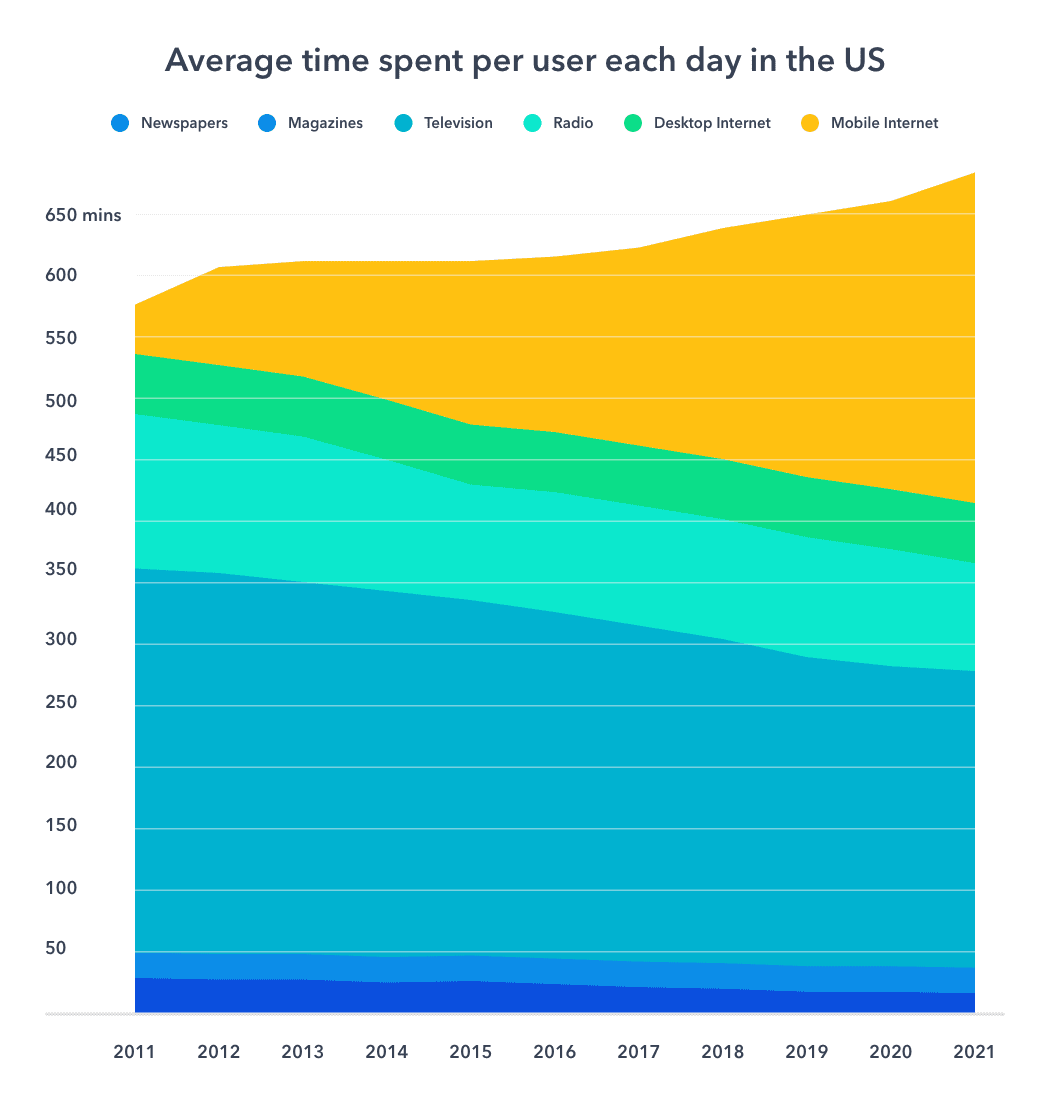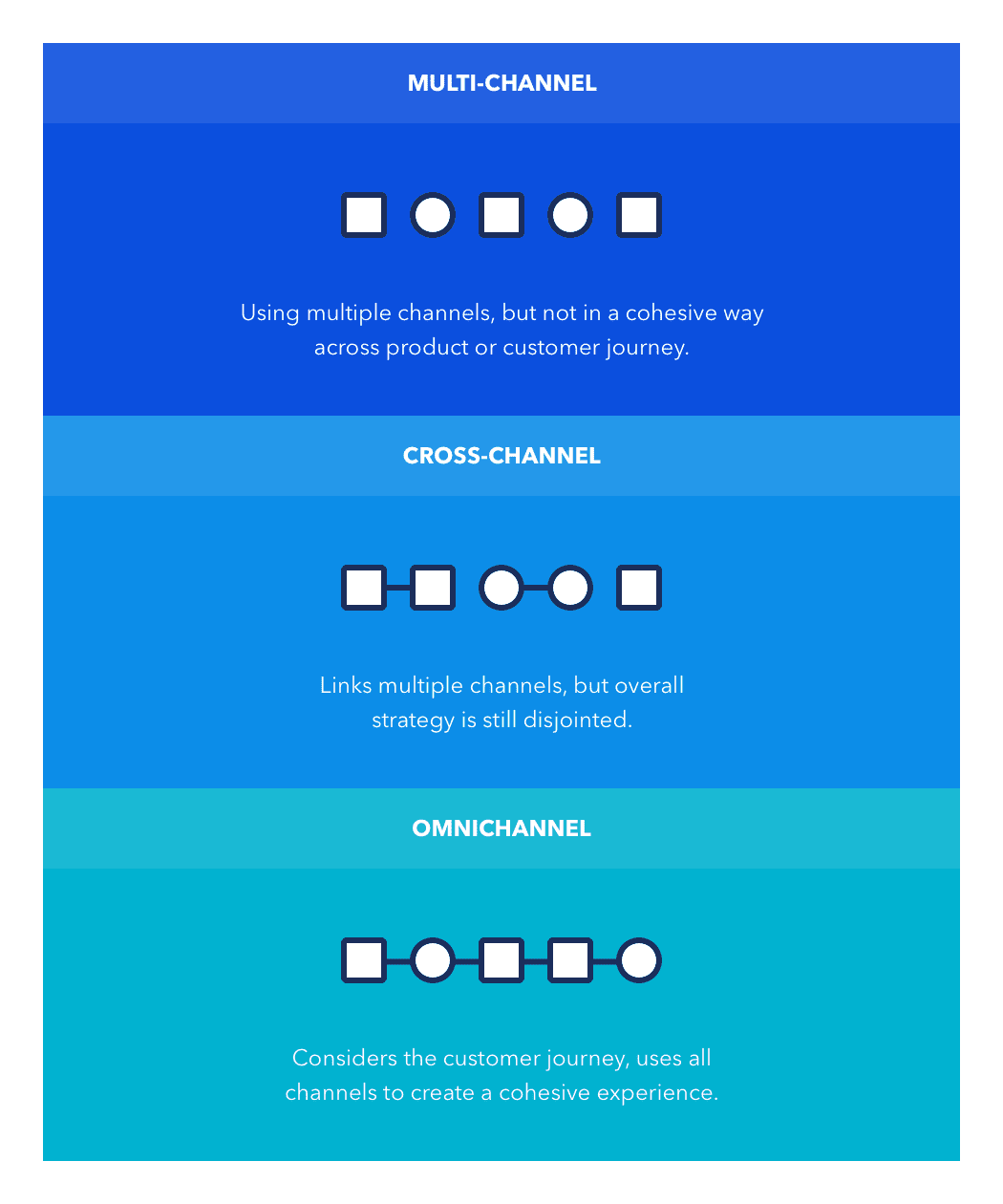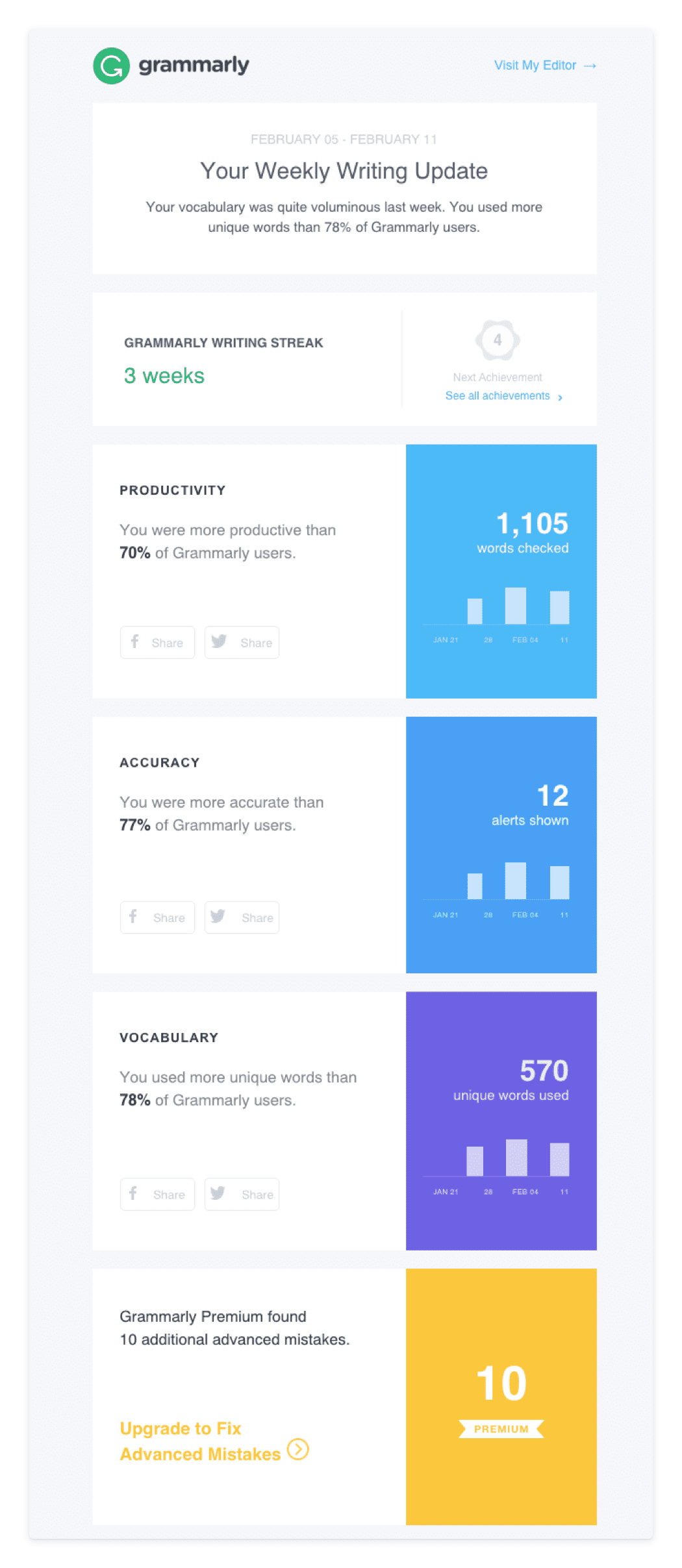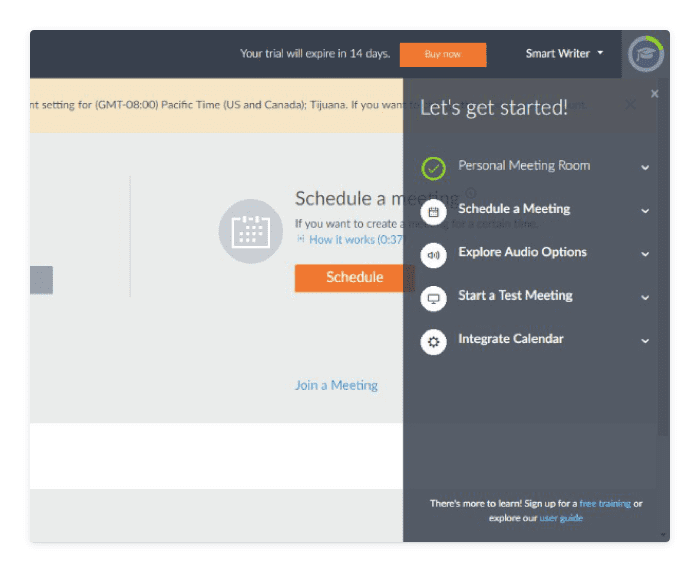
SaaS multi-channel marketing: What you need to know
-
Messaging and AutomationUpdatedPosted:
On this page
There are a ton of ways for customers to interact with your company.
It’s expected that in 2020, the average person will spend more than ten hours a day on their phones or computers and take in media via the radio, television, magazines, and newspapers.

With so much time spent on our phones, what’s the best way for your brand to interact with customers? The answer lies in multi-channel marketing.
What is multi-channel marketing?
At its most basic level, multi-channel marketing is simply a marketing strategy that uses multiple channels that include:
- Mobile push notifications
- Social media (Instagram, Facebook Groups, etc.)
- Messaging platforms (Facebook Messenger, WeChat, WhatsApp, etc.)
- Websites (i.e. your own website)
- In-app messages (i.e. popups within your own software)
- Online, live chat
- Content marketing, blogs, etc.
- Print media
- In-stores
- Radio ads
- …and more
The term starts to get confusing, though, when you hear it alongside its related terms. Raise your hand if you’ve also heard of “omnichannel marketing” or “cross-channel marketing.” These methods sound so closely related that it’s easy to get them confused or use them interchangeably.
You could probably ask ten different marketers to describe the differences between the terms, and you would get ten slightly different responses.
While there are differences between the terms and strategies, it’s understandable why some people may use them interchangeably. After all, all three terms deal with communicating with customers on different channels.
Also Read: How to get started with B2B marketing automation
The critical differences between multi-channel, omnichannel, and cross-channel marketing are related to how each channel aligns with the others, which leads to different experiences for customers.
Let’s decipher the differences once and for all.
Multi-channel marketing is the presence of multiple marketing channels. With this method, you may communicate with customers via live chat, social media, and your email newsletter. This description means you literally use multiple channels, but you may not use them in a cohesive fashion across your product or the customer journey.
For example, a purchase may trigger your welcome email sequence. However, if data about that customer’s actions and experience aren’t passed on to other marketing teams, your company could still be running paid ads to a user who has already converted. This is a waste of funds for your company, and a frustrating experience for customers.
Cross-channel marketing has multiple, complementary marketing channels. Cross-channel marketing begins to link multiple channels, but your overall strategy is still disjointed. In this instance, you may have two channels sharing information, but other marketing tactics aren’t connected.
For example, imagine a chatbot that helps segment potential customers as they’re signing up for your newsletter. While these two channels, your chatbot and email, are working together, your strategy doesn’t reach “omnichannel” status if this customer info isn’t also shared to other tactics, such as mobile push notifications.
Omnichannel marketing has various channels that work together to create a seamless experience. This method considers the customer’s journey and uses all channels together to create a cohesive experience to move them towards conversion.
We created the below graphic to compare the three.

In other words: good “multi-channel marketing” is “omnichannel marketing”, because not only do you use multiple channels — enabling the customer to interact in the best way for them — but you ensure those channels are consistent and work nicely together. You offer “one experience” across all channels.
Take a moment to think about your company from a customer’s perspective. Do you think they assess you differently on your website versus your email? Absolutely not! Potential customers perceive all of your channels as a single brand experience. If you strategize each channel in a silo, then the result for the customer isn’t very cohesive.
By focusing on a multi-channel, or better yet, omnichannel marketing strategy, you create a better experience for customers that yields more insights and sales for you.
An omnichannel strategy is the ideal end goal, but it does require tools to help you share information and experiences between channels. If you currently have a multi-channel strategy, you can use cross-channel marketing as a stepping stone by linking your most-use or effective channels first.
The evolution of multi-channel marketing
As time has passed and more devices and marketing channels become readily available, how has multi-channel evolved? Even more importantly, where does it need to go?
At first, having marketing strategies across channels would have been a novelty. These days, it’s a given. Customers expect you to have a website, an email list, social media pages, push notifications, print ads, and more. On top of that, customers also expect top-notch experiences across all of these channels.
Zendesk found that multi-channel consumers expect more than they did in years past. 61% of people noted that they’re more impatient with customer service than they were five years ago, and 89% agreed that brands need to offer a consistent experience across all channels to retain customers.
Since multi-channel availability is so ubiquitous, consumers will assume they can reach your brand on their preferred channel. With this expected availability, also comes the fact that your experience needs to be above and beyond to stand out.
Customers don’t want copy and pasted messages on different channels—it needs to be unique and cohesive. Serving up a great omnichannel experience is challenging for companies to execute!
So what does a brand have to do to meet consumer expectations across channels? They need data synchronization to keep channels consistent. Being able to collect and use data provides context and audience segmentation opportunities.
The problem is that, in practice, this has been tough to implement. Fortunately, tools such as webhooks and integrations between your app and marketing automation software are making these connections more accessible.
Great examples of multi-channel marketing
So you want to create a great customer experience across channels. Where do you start? It’s always helpful to first see how other companies have approached the challenge.
The typical starting point for your multi-channel marketing strategy is going to be email. By collecting an email address early, you unlock a recurring and personalized point of contact with a potential customer. You can even use the email signup process to begin to segment users.
For example, the weather app Poncho figures out what a person is interested in by asking them questions such as: “Wanna know how the day will affect your hair?” or “Do you have pollen allergies?”

Rather than trying to infer information with sophisticated data-tracking tools, Poncho simply asks. With this information in hand, they can tailor what a person sees across both email and other channels to create a great, custom experience for each user.
For example, in addition to sending dynamic content in email, they could also create custom landing pages or targeted re-engagement ad campaigns.
Grammarly is another company that’s good at using data across marketing channels. Their emails are customized each week to writing activity, which allows them to send targeted resources that help users learn and evolve.

If you have a mobile presence, another important touchpoint in your multi-channel marketing strategy will be mobile push notifications. While there are many ways to use push notifications, one great use case is connecting your channels. Want to call attention to a social media promotion you’re running?
Tease the prize via a push notification. Have a customer who hasn’t quite converted? Support your cart abandon email strategy with a personalized push notification like Airbnb does below. This sort of marketing is built on shared data, ensuring that what the customer sees on the website matches the experience they’re getting via push message and when they open the mobile app

While multi-channel alignment is always useful, it’s especially powerful at key customer “turning points.” These include (but aren’t limited to) first signing up, abandoning a cart, lapses in engagement, or hitting milestones and anniversaries.
These engagement moments can make or break revenue and promote customer churn, and therefore deserve the extra attention. By taking the time to support users across all touchpoints thoughtfully, you’re less likely to let someone “slip through the cracks” accidentally.
Also Read: Email marketing KPIs – this is how to use them
Another great SaaS multi-channel opportunity is onboarding. The first days or weeks of customer engagement sets the stage for the rest of the relationship. That means it’s even more critical that your channels work together towards a common goal.
Your emails, push notifications, in-app messages and content should all be built around the same “customer journey” in order to maximize success. For example, your onboarding emails shouldn’t mention features your product tours don’t cover.
Similarly, you can use mobile notifications to draw attention to relevant documentation. In the product tutorial from GoToMeeting below, there are a few tasks highlighted, such as scheduling a meeting or integrating your calendar.

If you wanted to integrate your marketing channels, you could use your onboarding email sequence to call attention to these same key actions. You could also use targeted mobile notifications to prompt inactive users to take a specific action.
Multi-channel marketing best practices
Want to create the best multi-channel marketing strategy for your business? Here’s a summary of the best practices and ideas to keep in mind:
- Collect data to help you understand where a person is in the customer journey, and to create personalized experiences on any channel. The best marketing considers context. What was a person doing to cause them to act at the moment they did, and what do they need to complete the next step? Integrating your marketing tools makes it easier to “see” between channels to create an experience that feels relevant.
- Use fundamental, owned channels, such as email and mobile push notifications to establish an early relationship with customers from which you can expand. Establishing a direct and recurring line of communication is powerful since you can use it to build relationships and move customers between channels. Use the signup process to begin segmenting users so that you have more context without advanced behavioral tracking.
- Make sure the story arc between channels is aligned. What do I mean by “story arc?” Let’s take onboarding as an example. There’s likely a sequence of steps that set a new user up for success, and their inclusion and order matters. Your multi-channel marketing shouldn’t be monotonous, but it needs to focus on the same topics and actions. Narrowing your focus while increasing touch points across channels makes it more likely a person will see the message and act accordingly. It will also help ensure that what you’re sending is always accurate and up to date. Too many companies go too “wide” when targeting various channels, reducing the quality of the experience as a whole.
- You still need to create unique messages and campaigns across channels. While you can use multiple channels to drive the same customer action, each channel needs to be unique. Tailor the messaging to fit each channel so that the customer isn’t bombarded with an identical pitch everywhere they look. Having lots of channels also doesn’t make up for having a high quality, powerful message that unites them.
Implementing a truly effective multi-channel marketing strategy for your SaaS company is often easier said than done.
Your marketing channels need to work together to create a cohesive and relevant experience if you want to increase revenue and retention. No matter how many great ideas you have, a lack of data and integrations will hinder your progress.
Want to learn more about coordinating your messages across channels? Try Vero to deliver the right message, at the right time, on the right channel.
Want to send more personalized mobile and email messages to your users?
Learn moreCustomer story

How Vero helps Dribbble take full advantage of their customer data to improve personalization

